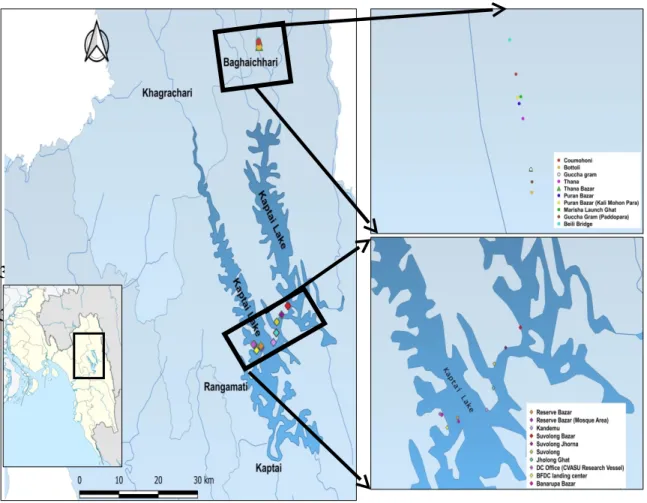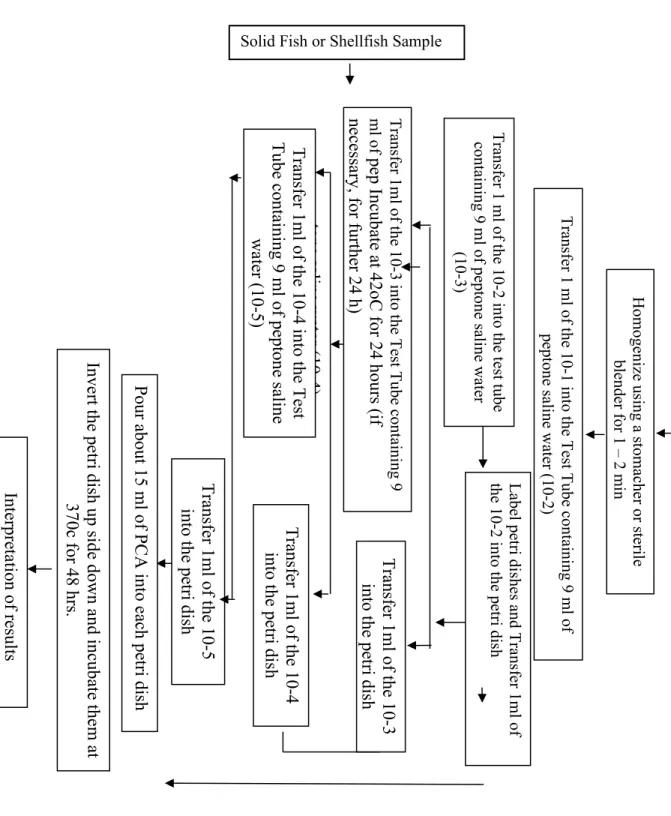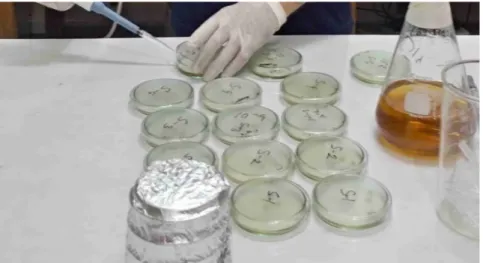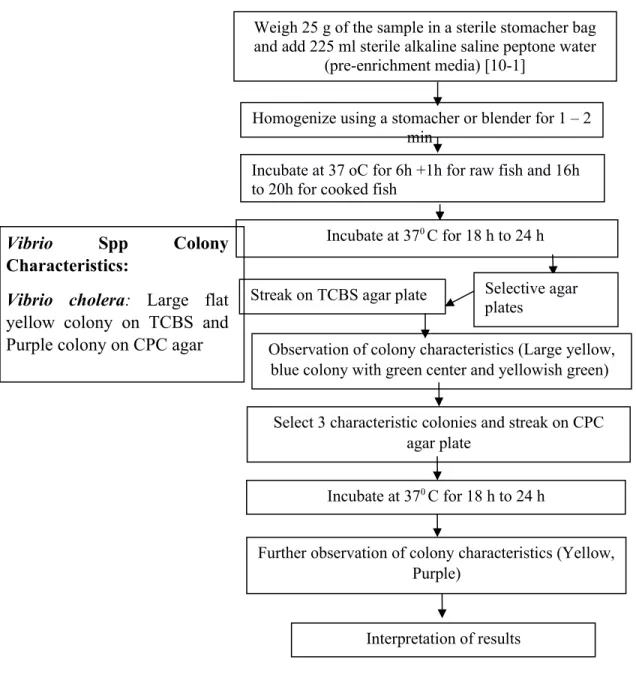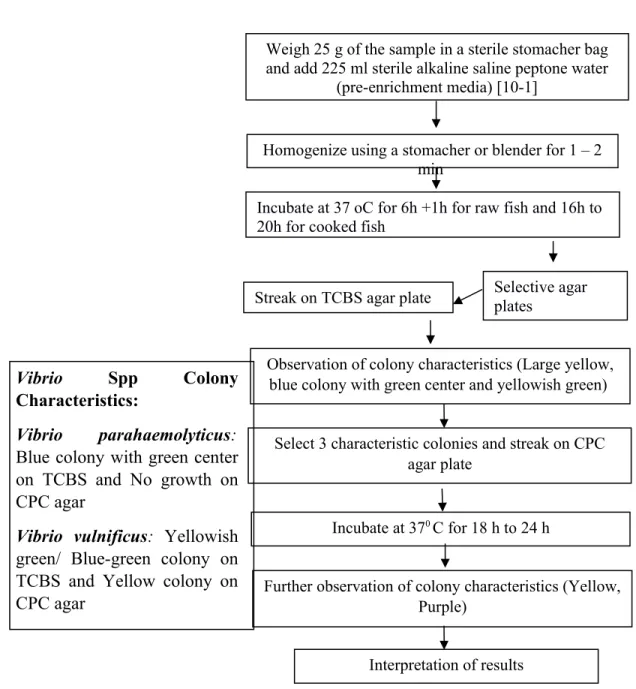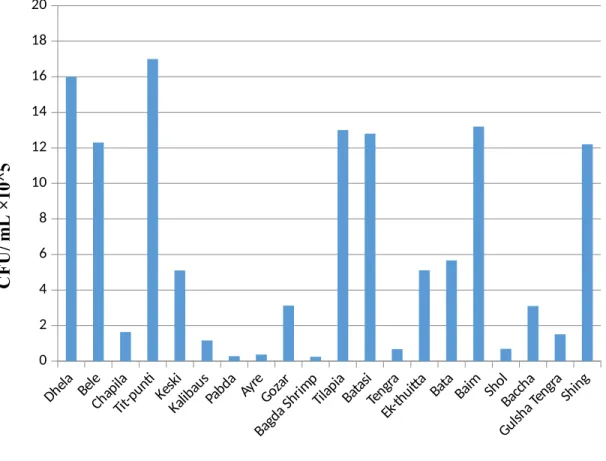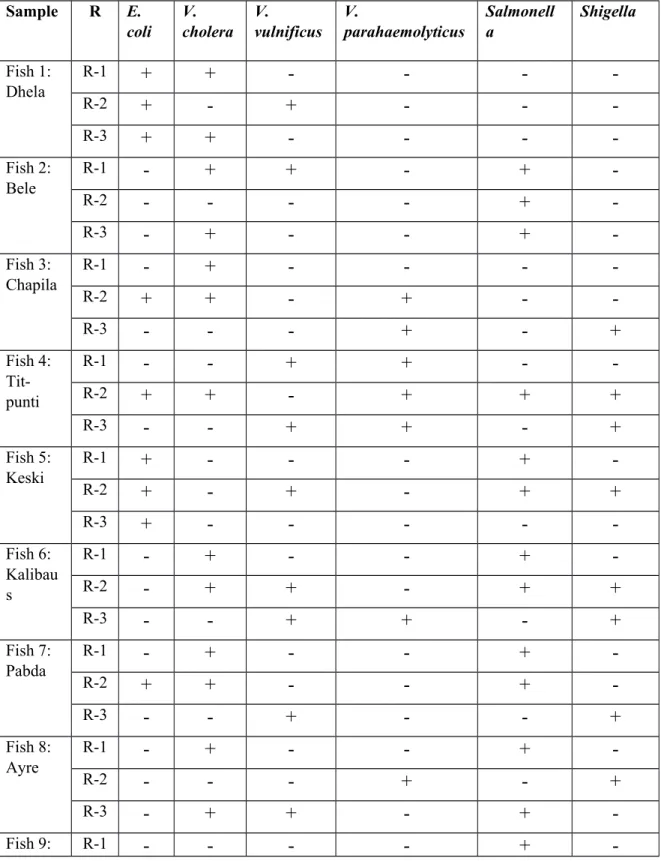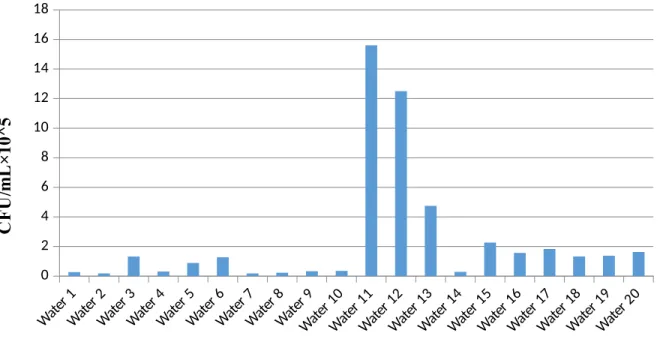I also authorize Chattogram Veterinary and Animal Sciences University (CVASU) to give this thesis to other institutions or individuals for the purpose of scientific research. Chairman of the Examination Committee, Department of Fisheries and Post-Harvest Technology, Faculty of Fisheries. Faisal, Assistant Professor and Director, Department of Fisheries and Postharvest Technology, Chattogram Veterinary and Animal Sciences University for his valuable suggestions, intellectual guidance, constructive and continuous inspiration throughout the study period and in the preparation of this manuscript.
I am proud to express my immense gratitude to my respected teachers of the Department of Fisheries and Game Technology, Chattogram Veterinary and Animal Sciences University for their kind cooperation, intellectual guidance, valuable suggestions and constructive criticism throughout the research period and for the thesis. I would like to express my gratitude to the laboratory technician and laboratory assistant of the Processing and Nutrition Laboratory, Faculty of Fisheries, Chattogram Veterinary and Animal Sciences University for providing laboratory facilities for this study. Description of tables Page no. 01 01 Types of fish caught in different months in
Due to the presence of E coli in most of the water and soil at most of the sampling sites, it can be concluded that these sites may be contaminated by human manure.
Chapter-1: Introduction
In addition, the people living on the islands of the lake use the lake water for drinking water and other domestic needs without first undergoing any purification treatment (Barua et al., 2016; Chakma, 2008). Water tainted with pathogenic bacteria has the ability to spread a variety of infectious diseases to humans (Sadeghi et al., 2007). The most prevalent gastrointestinal diseases spread through water contaminated with patient feces are cholera, salmonellosis and shigellosis (Cabral, 2010).
The most crucial factors in ensuring good health are contamination and pathogenic bacteria free seafood. The bacterial population found in fish, water and sediments will be categorized in this study. People living along the shore of Kaptai Lake who use the dirty lake water for domestic purposes can often become seriously ill.
To determine the total microbial load in fish, shellfish, water and soil samples of Kaptai Lake.
Chapter-2: Review of literature
- Kaptai Lake
- Present status of fish biodiversity in Kaptai Lake
- Fish microbiology
- Microbiological relation with fish nutrition
- Fish market and marketing channels
- Water Microbiology
- Bacteriological Characteristics of Kaptai Lake
- Soil microbiology
Fish provide 30% of the annual protein requirements of nearly 60% of developing countries (Abisoye et al., 2011). Fish can be toxic due to pathogens that can grow and multiply inside the storage until they release the toxin (Eze et al., 2011). A possible transmitter of many infectious diseases to humans is water contaminated with harmful microorganisms (Sadeghi et al., 2007).
However, a high density of HPC in drinking water does not always imply a serious health risk (Allen et al., 2004). According to Ding et al. 2010), wetland ecosystems near lake basins are the most ecologically diverse. Runoff particles and suspended sediments are transported, stored and altered in estuaries (Arzayus & Canuel, 2005; Sun et al., 2011).
Numbers are meaningless for fungi and actinomycetes because the morphology and growth rate of algae vary so widely (Zinger et al., 2011).
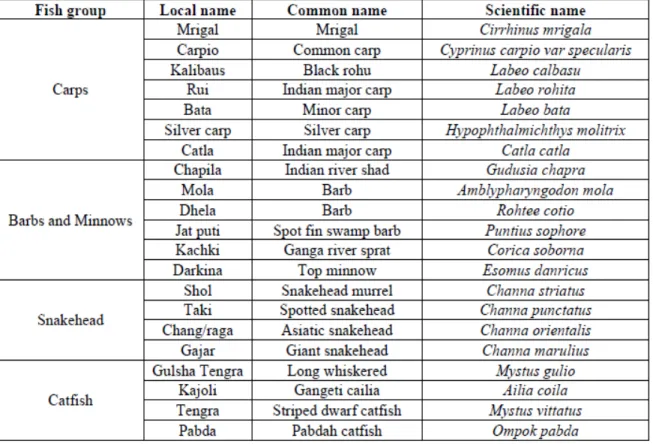
Chapter-3: Materials and Methods
- Sampling Area of Fish
- Sample collection
- Collection of fish samples
- Collection of water and soil samples
- Microbiological analysis 1. Sterilization of materials
- Sample preparation
- Preparation of serial dilution
- Preparation of Plate Count Agar (APC)
- Inoculation of sample in agar plate
- Identification of Pathogenic Bacteria
- Identification of E. coli
- Identification of Salmonella and Shigella
Water and soil samples were collected in March 2021 at the end of the winter season. Soil samples were collected from five different points [Fishery Ghat, Reserve Bazar, Samata Ghat-1, Samata Ghat-2 and DC office Ghat] with replication and the points were selected on the basis of lake inhabitants (Figure 01). Soil samples were also collected from various sampling stations and packed in ziplock poly bags.
Water samples for microbiological analysis were also taken from the same sampling points in sterile falcon test tubes (50 ml), which were placed in sampling buckets. Then all the water and soil samples collected were transported to the Disease and Microbiology Laboratory of the Faculty of Fisheries, Chattogram Veterinary and Animal Sciences University, Chattogram. All the glass products used were washed, dried and sterilized in a hot air oven at a temperature of 150 °C for 1 hour one day before taking the samples according to the method described by Adibe and Eze (2004).
Then the crushed 10 g sample was transferred into a sterile beaker with 90 ml of peptone water giving a 1:10 dilution. Nine milliliters of sterile peptone water was aseptically poured into six tubes each and 1 ml of the first dilution of the original minced fish sample was added to the first test tube and mixed thoroughly. Another 1 ml was taken from the second test tube and introduced into the third test tube and mixed very well.
Interpretation of results Label petri dishes and Place 1ml of the 10-2 in the petri dish Weigh 25g of the sample into a sterile bag and add 225ml of sterile physiological saline. Duplicate plates of nutrient agar were inoculated with 0.1 ml of the diluted solution (10-2 to 10-6) using the glass scatter technique. The method described by Collins et al. 1989) for estimating bacterial counts was used to sum the total viable counts of the isolates.
Weigh 25g of the sample into a sterile stomacher bag and add 225ml of sterile peptone saline. Weigh 25g of the sample into a sterile stomacher bag and add 225ml of sterile buffered peptone water (pre-enrichment media) [10-1].
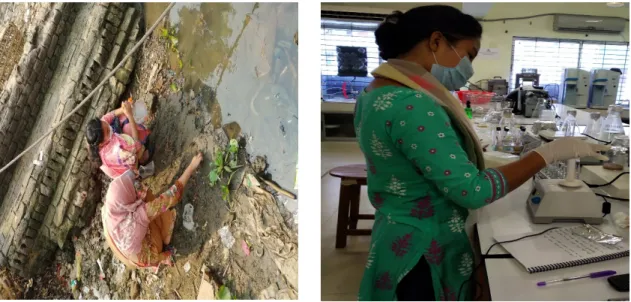
Chapter-4: Results
Bacteria Isolated and Identified from Fish
Bacterial quantification, isolation and identification from water and soil samples
Chapter-5: Discussion
The most frequent pathogenic bacteria detected in association with fish, soil and water from several locations in Kaptai Lake were E. Their prevalence was attributed to fish ponds being contaminated with animal feces (Abdelhamid et al., 2006). The results suggest that the microbial quality of the fish under study may be within acceptable ranges and not now a possible public health concern, according to published microbiological criteria mentioned by Gilbert et al.
Due to the typically high demand for animal manure to fertilize cropland in the remote areas studied, little is left over for fish feeding in earth dams. As coliforms are not part of the typical commensal bacteria in fish and water, their presence in fish as well as other samples shows the extent of environmental contamination E. Similar research found Salmonella typhi, Staphylococcus aureus, Shigella dysenteriae and Escherichia coli in the gills, intestines, muscles and skin of Megalaspis cordyla and Priacanthus hamrur from Royapuram waters in India (Sujatha et al., 2011).
Using the usual MPN indexing method, the TCC in samples collected from Lake Kaptai has been studied before. All water samples taken from Kaptai Lake were positive for coliform bacteria, making it potentially dangerous for human consumption. Kaptai Lake is used by certain local residents as a repository for animal and human waste, contaminating the water.
We found that the mentioned infections were present in all samples of Lake Kapta. Other samples taken from other parts of Kaptai Lake were devoid of this bacterial species. All of these bacteria are the main causes of many waterborne outbreaks, as well as causes of gastrointestinal disturbances with symptoms such as diarrhea, vomiting, nausea, fever, and abdominal discomfort (Craun et al., 2006).
It has been found that these bacteria can contaminate lake water from storms and stream flows (Jamieson et al., 2005). Our research shows that the water in Kaptai Lake is contaminated with dangerous microbes, making it unfit for drinking and domestic use.
Chapter-6: Conclusions
The total number and faecal coliform bacteria in untreated water intended for consumption should be less than 10/100 ml per recommended values for bacteriological parameters. The identified pathogens may have been contaminated by human waste, animal excreta, fishing, people bathing with skin sores, etc. However, the forms of disease and frequency of disease among those who lived close to Kaptai Lake were not documented.
Since these microorganisms could contaminate fish and therefore a source of food poisoning; harvesting, handling and cooking must be done correctly to reduce the bacterial load. Therefore, the objective of this study is to offer basic knowledge about these bacteria that, when found in fish taken from Kaptai Lake, are likely to result in foodborne illness.
Chapter-7: Recommendations and Future perspectives
The role of infectious Escherichia coli strains as well as evolving microorganisms in drinking water-borne diseases is also briefly highlighted. It introduces and discusses the most important faecal indicator bacteria as well as the most common bacteria found in human and animal faeces (with an emphasis on how these bacteria behave in their host and environmental contexts). You will also get a quick overview of some of the major contributors to the bacterial faecal pollution of natural waterways.
In the last point it is discussed which markers of faecal contamination should be used in the modern microbiological examination of drinking water. To ensure that everyone in the world has access to clean water, microbiological management of water supplies must become standard worldwide. Evaluation for the presence of various harmful bacteria using culturing techniques should be part of the standard operating procedure of a water system for basic microbiological examination.
Additional research is needed to determine whether ammonia can be used as a first-stage screening tool in emergencies involving fecal contamination. Human and animal faecal bacteria in environmental waters: a better understanding of their ecology and behavior requires an investment of time and money.
Proposals for Improving Water, Sanitation, Health and Environment in Kaptai Lake Chittagong Hill Tracts (CHT), Bangladesh CHT Indigenous Jumma Association Australia, Australia. The suitability of the traditional microbial indicators and their enumeration methods for the assessment of faecal pollution of subtropical freshwater environments. Assessment of drinking water quality of madhyapur-thimi and study of antibiotic susceptibility of bacterial isolates.
Rahman IMM, Islam MM, Hossain MM, Hossain MS, Begum ZA, Chowdhury DA, Chakraborty MK, Rahman MA, Nazimuddin M, Hasegawa H. Stagnant surface water bodies (SSWBs) as an alternative water source for the Chittagong metropolitan area of Bangladesh: physico-chemical characterization in terms of water quality indices. Bacteriological and physico-chemical characteristics of Kaptai Lake water in terms of public health significance. International Journal of Scientific Research in Environmental Sciences.
